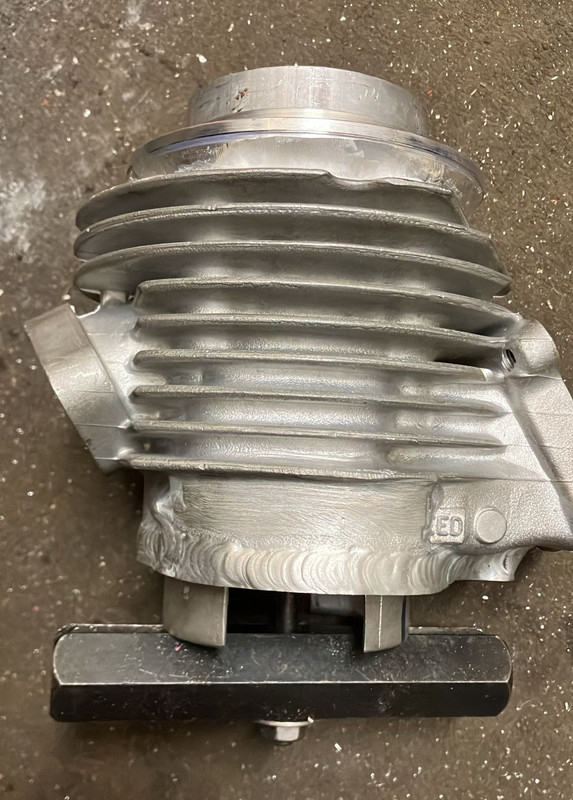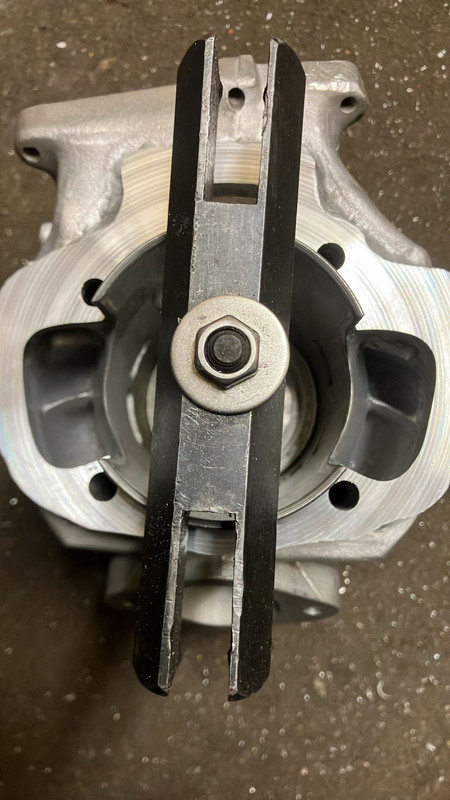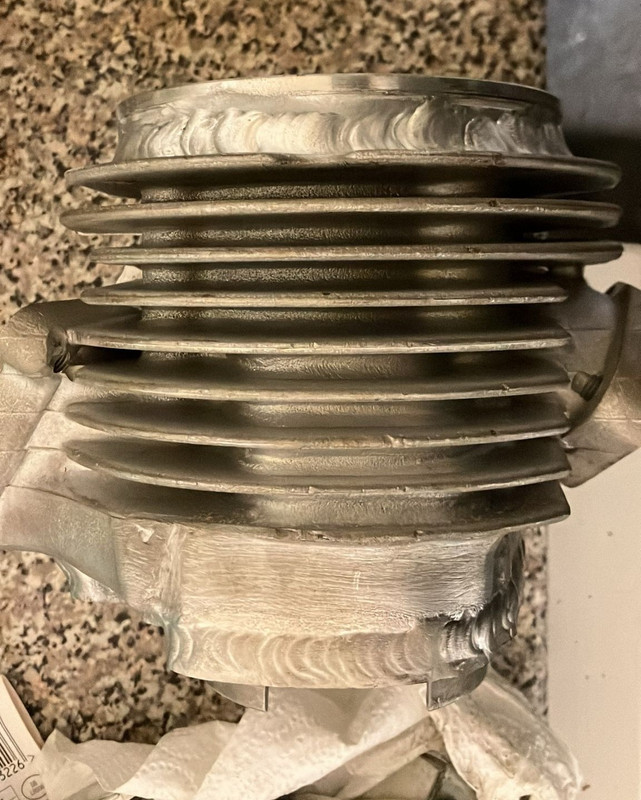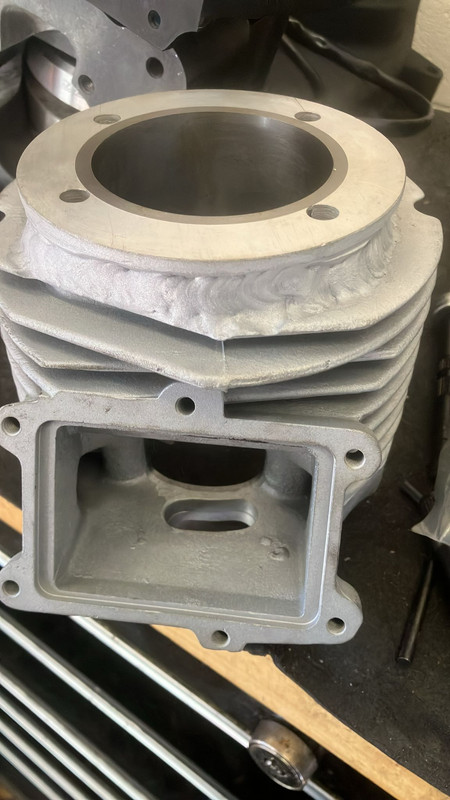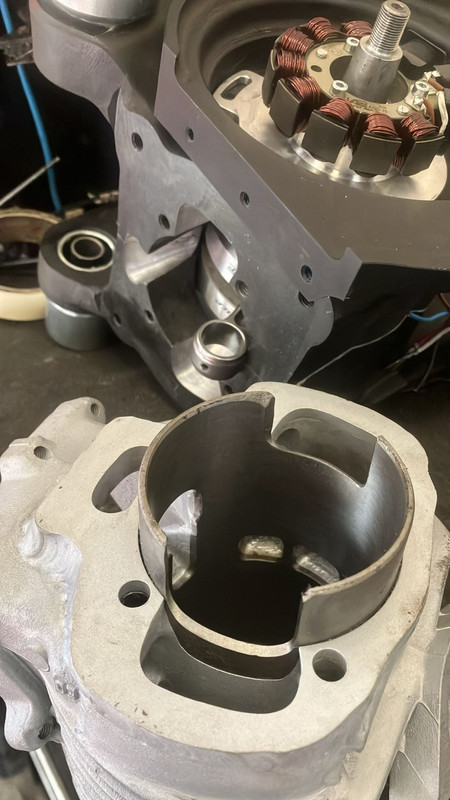LCGB Forums
The ability to post messages is restricted to LCGB members. Any questions contact us at lcgbadmin@googlemail.com
RB270 Project
56 posts
• Page 2 of 3 • 1, 2, 3
Re: RB270 Project
Cheers Norrie, that's good to hear.
-

Solid Air - Posts: 1045
- Joined: Sun Jun 01, 2014 10:58 pm
- Location: Cambridge
Re: RB270 Project
Thanks Adam
-

Solid Air - Posts: 1045
- Joined: Sun Jun 01, 2014 10:58 pm
- Location: Cambridge
Re: RB270 Project
Slowly but surely Norrie 
-

Solid Air - Posts: 1045
- Joined: Sun Jun 01, 2014 10:58 pm
- Location: Cambridge
Re: RB270 Project
It appears that you are maintaining the porting & the layout as the RB22 cylinder rather than the RB25, but have you considered additional porting from the bottom end via the inlet manifold? In other words, rather than only the finger boost ports heading up toward the top end, have the bottom end ‘communicate’ via similar porting in line.
I imagine the beefier case, in conjunction with the meat added to the cylinder, would offer better scope than normal cases to do so. My opinion is that it is extremely useful, not least because the big end bearing benefits due to increase in the movement of the inlet charge within it’s close proximity.
As others have remarked, the piston choice will be interesting, though you probably are likely to ensure that there are bleed holes in line with the bridge. I think the liner - as opposed to Nikasil - should make for a wider choice of piston, though I have used a DT250 piston in a reed valve engine with plated bore & despite that not being the ideal, the combination worked extremely well. The piston required re-pegging but I’ve never had any qualms about that process & done so when necessary. If re-pegged pins fail, it can only be due to the material choice &/or the quality of fit IMO.
I imagine the beefier case, in conjunction with the meat added to the cylinder, would offer better scope than normal cases to do so. My opinion is that it is extremely useful, not least because the big end bearing benefits due to increase in the movement of the inlet charge within it’s close proximity.
As others have remarked, the piston choice will be interesting, though you probably are likely to ensure that there are bleed holes in line with the bridge. I think the liner - as opposed to Nikasil - should make for a wider choice of piston, though I have used a DT250 piston in a reed valve engine with plated bore & despite that not being the ideal, the combination worked extremely well. The piston required re-pegging but I’ve never had any qualms about that process & done so when necessary. If re-pegged pins fail, it can only be due to the material choice &/or the quality of fit IMO.
- Warkton Tornado No.1
- Posts: 2257
- Joined: Sun Jan 11, 2015 1:27 pm
Re: RB270 Project
WT#1 - I can't claim to be the technical brains behind the engineering of the barrel. I came up with the idea of using a CasaCase with a big crank to make a torque low-revving engine, with the added safety given by the larger crank, and my mate had an RB barrel sitting on the shelf.
As we are using the crank to increase the cc, the piston will be a standard / Wiseco RB piston, which should also give added off-the-shelf convenience if needed.
Here is a better picture of the bottom of the barrel, there will be a port in the crankcase to the floor of the inlet, lining up with the rear ports above the inlet (apparently )
)
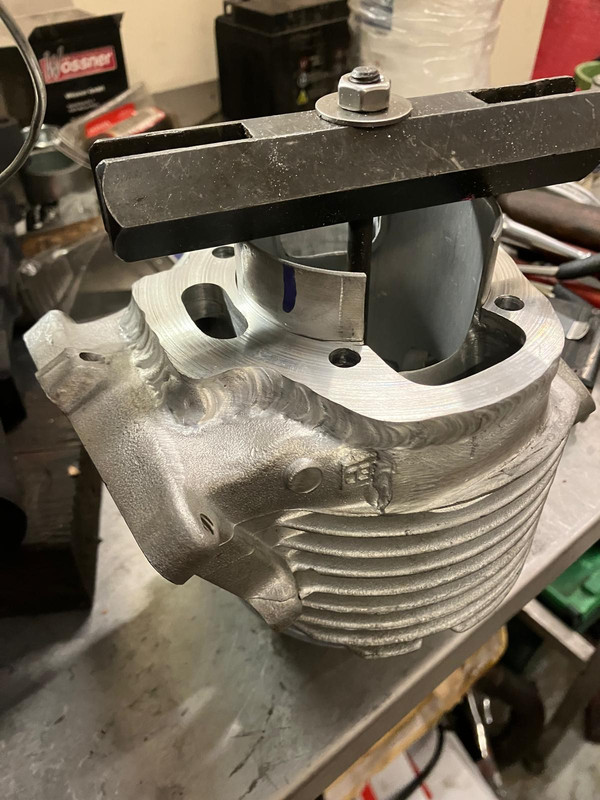
As we are using the crank to increase the cc, the piston will be a standard / Wiseco RB piston, which should also give added off-the-shelf convenience if needed.
Here is a better picture of the bottom of the barrel, there will be a port in the crankcase to the floor of the inlet, lining up with the rear ports above the inlet (apparently

-

Solid Air - Posts: 1045
- Joined: Sun Jun 01, 2014 10:58 pm
- Location: Cambridge
Re: RB270 Project
Even though I have no current use for such a barrel, I want to build one.
I hope I don’t find an RB barrel at Melton Mowbray in March; it could be the start of a side-project that I don’t need right now.
I hope I don’t find an RB barrel at Melton Mowbray in March; it could be the start of a side-project that I don’t need right now.
-

Knowledge - Posts: 1972
- Joined: Sat May 31, 2014 11:42 am
- Location: Ipswich
Re: RB270 Project
Go on Martin, you know you want to! 
-

Solid Air - Posts: 1045
- Joined: Sun Jun 01, 2014 10:58 pm
- Location: Cambridge
Re: RB270 Project
Coming along well Mark 
-

ULC Soulagent - Posts: 2167
- Joined: Sun Apr 03, 2016 3:26 pm
- Location: Milton Keynes
Re: RB270 Project
Cheers Shane.
Today's progress
Mocked the top end up to check frame fitment.
We were expecting to need to move the frame engine mount, but all that we had to do was take the corner off the inner front left of the frame loop and tickle the rear runners.
The deck height is much lower on the CasaCase than a standard one, which meant that there was just about enough space for the top end without moving the engine mount. Pic 2 does this clearly - the gasket face is immediately in front of the silent mount, whereas with a standard case gasket face it is further forward.
Also, there is still some machining to do on the cylinder head which, will give an extra 3-4mm.
The flat-sided engine bolt and offset cones helped too.
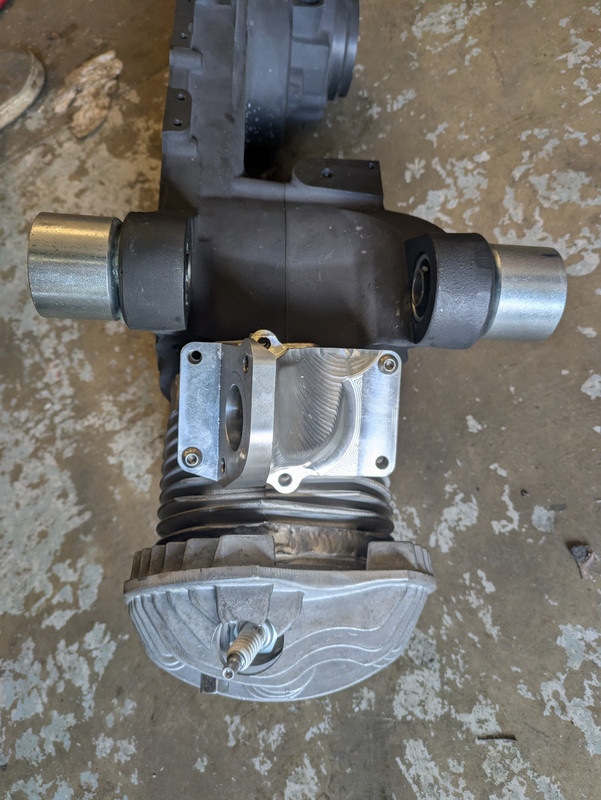

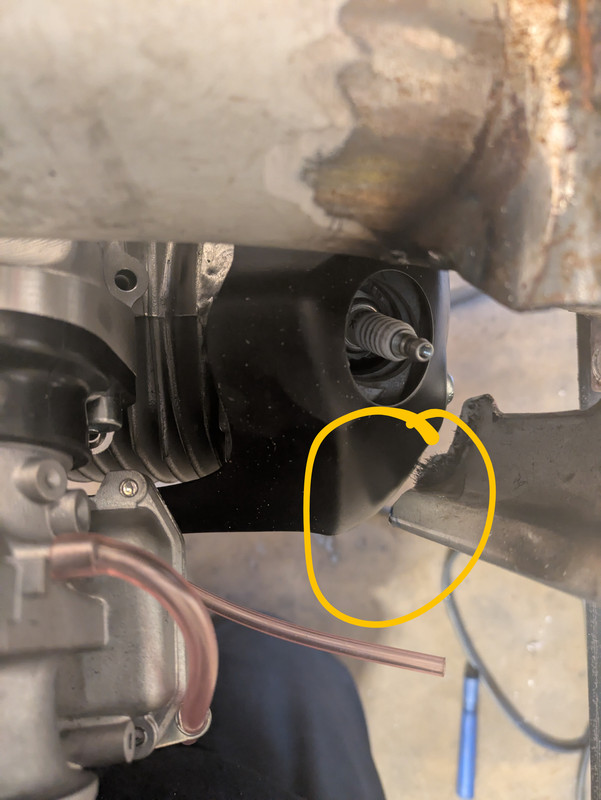
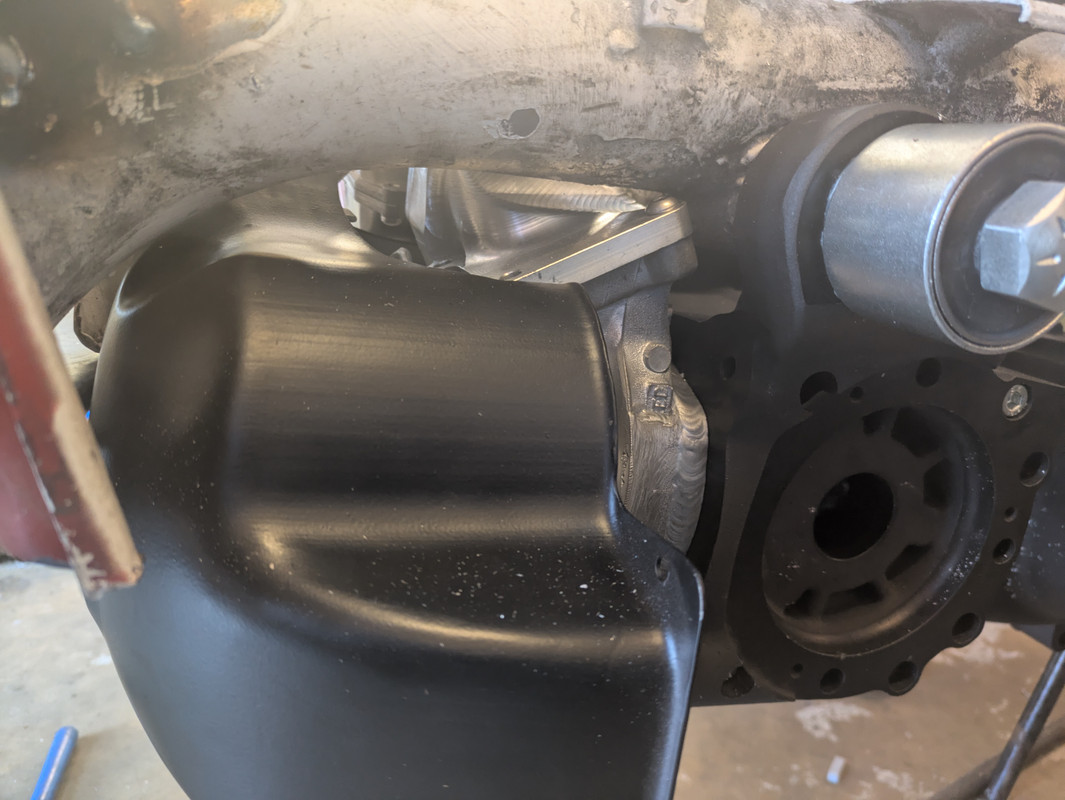
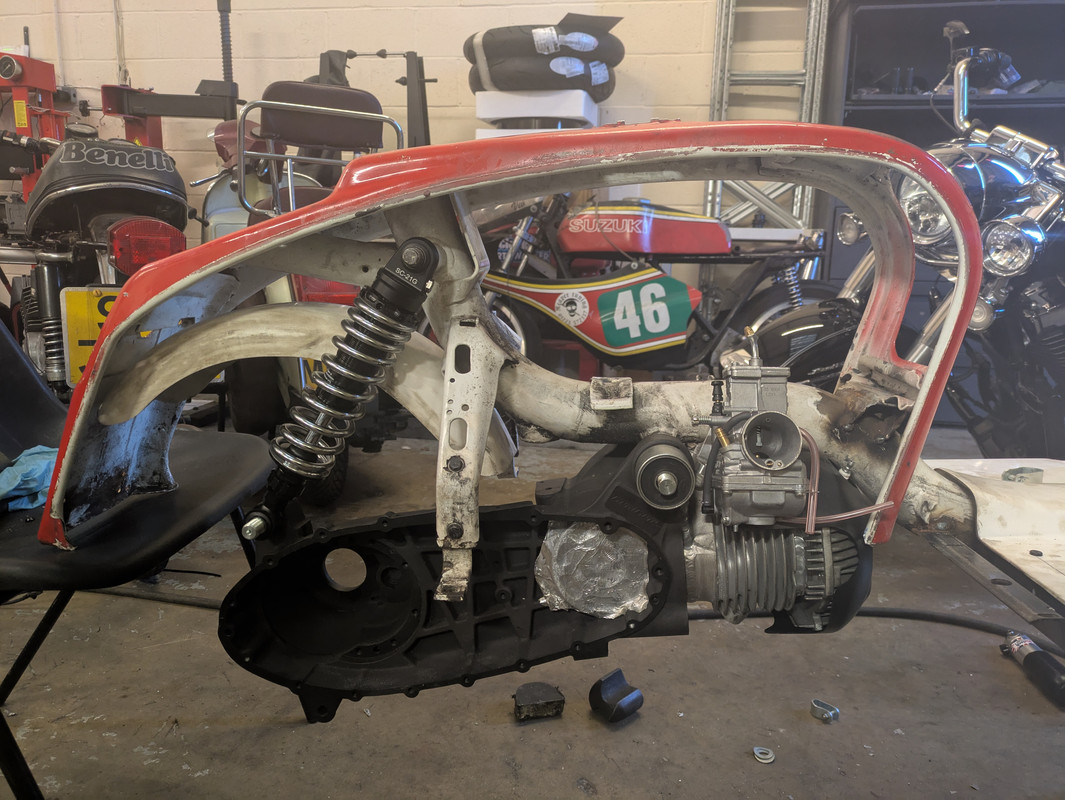
Today's progress
Mocked the top end up to check frame fitment.
We were expecting to need to move the frame engine mount, but all that we had to do was take the corner off the inner front left of the frame loop and tickle the rear runners.
The deck height is much lower on the CasaCase than a standard one, which meant that there was just about enough space for the top end without moving the engine mount. Pic 2 does this clearly - the gasket face is immediately in front of the silent mount, whereas with a standard case gasket face it is further forward.
Also, there is still some machining to do on the cylinder head which, will give an extra 3-4mm.
The flat-sided engine bolt and offset cones helped too.





-

Solid Air - Posts: 1045
- Joined: Sun Jun 01, 2014 10:58 pm
- Location: Cambridge
Re: RB270 Project
Your frame / head clearance is similar to that on my Mugello 293 with 72mm stroke on Casa Case, which has been fine in use. I have used the more common AFR head, rather than the Mammoth head, so am glad to see that you've managed to configure this to suit also.
I look forward to seeing this turn a wheel. I've zero doubt that it'll be considerably more powerful than mine, having started with the RB as the base cylinder, but if mine is anything to go by, it should be a very pleasant ride.
As Martin has already said, it gets me wanting to start tinkering again!
Nice work, well done.
Adam
PS - Martin, if only Harry had been prepared to sell me one of his revised stud location top ends, like yours, I could have upped my cc a little
I look forward to seeing this turn a wheel. I've zero doubt that it'll be considerably more powerful than mine, having started with the RB as the base cylinder, but if mine is anything to go by, it should be a very pleasant ride.
As Martin has already said, it gets me wanting to start tinkering again!
Nice work, well done.
Adam
PS - Martin, if only Harry had been prepared to sell me one of his revised stud location top ends, like yours, I could have upped my cc a little
- Adam_Winstone
- Posts: 1218
- Joined: Tue Jun 03, 2014 1:52 pm
Re: RB270 Project
I’d just like to comment about bore & stroke as my perception is that there is still a tendency for many of us to go down the ‘over-square’ route, rather than ‘stroking’, even though with the advent of purpose built cases, that is a viable option.
Under-square engines are the norm with powerful two stroke engines, particularly motocrossers, & the advantages can be applied to the Lambretta. A smaller bore can yield benefits in the size & number of transfer/boost ports & enable temperature stability due to the increased wall thickness. Despite what some may have to say about bigger transfers, my opinion is that more & larger transfer ports are conducive to a better controlled movement of the mix to the top end whilst also increasing the capacity of the bottom end & lowering primary compression.
With our Lambrettas, we may well be trailing our European counterparts in realising the full capabilities of our engines &, in particular, their development of exhausts. The extremely powerful Vesp@s that are sprinted appear to have huge diameter mid sections & that may well be a very limiting factor for ‘us’ taking into account the issues in plumbing in such a device whilst still maintaining ground clearance & fan cooling. Charlie Edmonds moved the goalposts when he developed his Group Four engines & whilst his interpretation of the rules dictating the positioning of the exhaust could be questioned, there is little doubt that the chosen route did not allow for a full magneto housing, fan & cowlings. Bearing in mind that was ‘only’ a capacity of up to 210 cc with a 58 mm stroke, it will be interesting to see if this particular engine can reach it’s full potential on pump fuel, not AvGas or Methanol. I hope so, but it may necessitate the exhaust occupying space usually allocated to the fuel tank
Under-square engines are the norm with powerful two stroke engines, particularly motocrossers, & the advantages can be applied to the Lambretta. A smaller bore can yield benefits in the size & number of transfer/boost ports & enable temperature stability due to the increased wall thickness. Despite what some may have to say about bigger transfers, my opinion is that more & larger transfer ports are conducive to a better controlled movement of the mix to the top end whilst also increasing the capacity of the bottom end & lowering primary compression.
With our Lambrettas, we may well be trailing our European counterparts in realising the full capabilities of our engines &, in particular, their development of exhausts. The extremely powerful Vesp@s that are sprinted appear to have huge diameter mid sections & that may well be a very limiting factor for ‘us’ taking into account the issues in plumbing in such a device whilst still maintaining ground clearance & fan cooling. Charlie Edmonds moved the goalposts when he developed his Group Four engines & whilst his interpretation of the rules dictating the positioning of the exhaust could be questioned, there is little doubt that the chosen route did not allow for a full magneto housing, fan & cowlings. Bearing in mind that was ‘only’ a capacity of up to 210 cc with a 58 mm stroke, it will be interesting to see if this particular engine can reach it’s full potential on pump fuel, not AvGas or Methanol. I hope so, but it may necessitate the exhaust occupying space usually allocated to the fuel tank
- Warkton Tornado No.1
- Posts: 2257
- Joined: Sun Jan 11, 2015 1:27 pm
Re: RB270 Project
Awesome Mark 
-

Rich Oswald - Posts: 9811
- Joined: Fri May 30, 2014 3:30 pm
- Location: Wiseman From The East (East Of The Pennines That Is)
Re: RB270 Project
Monster looking good Mark.

-

shane BBoys - Posts: 496
- Joined: Sat Sep 06, 2014 5:46 pm
- Location: Bradford
Re: RB270 Project
Thanks fellas 
-

Solid Air - Posts: 1045
- Joined: Sun Jun 01, 2014 10:58 pm
- Location: Cambridge
Re: RB270 Project
Loving this thread and wished I had half the kind of aptitude shown.Top stuff,thanks
- Micky67keane
- Posts: 384
- Joined: Thu Dec 17, 2020 7:35 pm
Re: RB270 Project
Thanks Micky and glad you're enjoying the thread. It helps to have a knowledgeable and capable mate that can make my ideas real.
-

Solid Air - Posts: 1045
- Joined: Sun Jun 01, 2014 10:58 pm
- Location: Cambridge
56 posts
• Page 2 of 3 • 1, 2, 3
Who is online
Users browsing this forum: Google [Bot] and 7 guests
